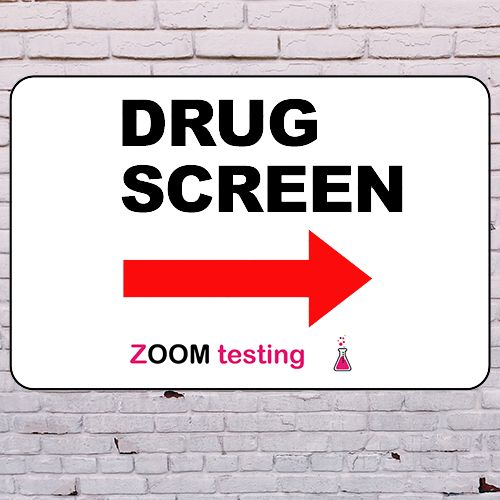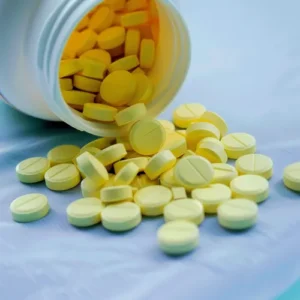When it comes to employment drug screening, the method most often used is urine drug testing. This involves asking the candidate to provide a urine specimen, which is then tested for the presence of drugs of abuse such as alcohol, cannabis or cocaine.
Occasionally, people try and cheat a urine drug test, and they do this by using one of three methods:
Cheat A Drug Test – Method 1: Dilution
This method of trying to cheat a drug test involves the donor tampering with the urine sample by adding water to it in order to decrease the concentration of drugs. Alternatively, the donor may try to over-hydrate themselves by drinking an excessive amount of water before the test. Or they may use items that are available on the internet such as Mary Jane Super Clean 13 or QuickKlean, products which claim to be able to mask the results of employee drug tests.
Diluting urine is one of the most common ways people try to cheat drug screening. They may drink large amounts of water or other fluids before the test to dilute their urine. Some people even take diuretics or water pills to try to flush out drug metabolites faster. However, most labs can detect diluted urine by looking at the creatinine level, specific gravity, or pH. Diluted samples may be rejected or require a re-test.
Cheat A Drug Test – Method 2: Addition
Another way that people try and cheat a drug test is by adding something to the urine sample in order to invalidate the result. Typically, a search on the internet will unearth all manner of different substances that are claimed to be able to change a drug test result. Typically, urine samples are adulterated by the addition of substances such as apple juice, bleach, eye drops or vinegar. Chemical adulterants, which are sold on the internet, are also used.
Adding chemicals or adulterants to urine is another technique people use. Household products like bleach, vinegar, soap, or eye drops are sometimes added in an attempt to distort test results. There are also commercial adulterants like Urine Luck, Klear, and Stealth that are marketed to help people pass drug tests. However, most labs test for adulterants and can detect their presence. Adulterated samples may be rejected or need re-testing. Using adulterants can also be considered tampering with evidence.
Cheat A Drug Test – Method 3: Substitution
The third method of trying to cheat a drug test is by substituting the urine sample with that of somebody else at the point when the sample is being taken.
Substituting someone else’s urine or using synthetic urine is another cheating method. This involves bringing a sample obtained from a drug-free person or purchased online to submit instead of your own urine. However, labs can usually detect substitution by checking the temperature and chemical makeup of the sample. Substituted samples will often be rejected or need re-testing. Providing fake urine samples may also constitute fraud.
Ways of Detecting If a Urine Sample Has Been Adulterated
There are a number of ways of checking if a urine sample has been subject to either dilution, addition or substitution.
An adulteration test will normally detect dilution or addition. By checking for certain urinary characteristics such as creatinine, pH, and specific gravity, a suspect sample is easily detected.
Substitution is normally quite easily detected by the monitoring temperature of the employee drug test specimen. Many of our drug tests that have an integrated cup also have a temperature strip on the side, just for this purpose.
Consequences of Cheating on a Drug Test
While some methods may help people pass a drug test in the short term, cheating has serious consequences if detected. Diluted, adulterated or substituted samples are often considered failed tests. The person may be required to re-test immediately under observation. Cheating can also lead to termination, criminal charges for providing fake samples, or disqualification from employment eligibility.
At best, cheating may buy some time before drug use is detected. But it does not resolve underlying issues with substance abuse that need addressed through treatment and counselling. Being honest about drug use and seeking help is better than risking consequences from cheating.
Additional Ways to Detect Cheating
Along with common measures like checking temperature, creatinine, pH and specific gravity, some testing labs use additional methods to detect cheating and sample tampering:
- Oxidant tests check for the presence of chemicals like nitrite, chromium and pyridine that are commonly used to adulterate urine samples.
- DNA analysis can be done to verify if urine samples actually match the donor’s DNA profile and did not come from someone else.
- Specimen validity testing looks for inconsistent biochemical properties that may indicate dilution, substitution or addition of adulterants.
- Direct observation requires the employee to provide a new sample under supervision to prevent tampering.
With advanced detection methods, trying to cheat on a work-related drug test is extremely difficult. However, those struggling with substance abuse issues are encouraged to be honest and seek assistance before it impacts their employment.
Photo by Zoom Testing
Zoom Testing is a leading UK drug testing company and a supplier of Drug Test Kits.
This post was originally published in 2015 and has been updated since.





